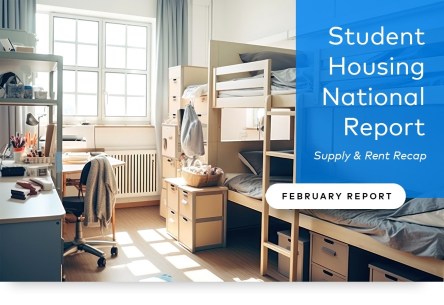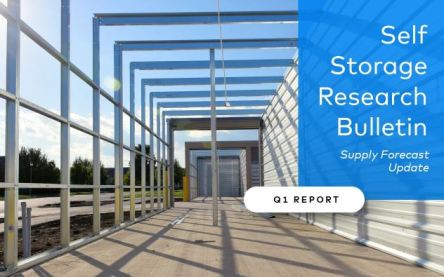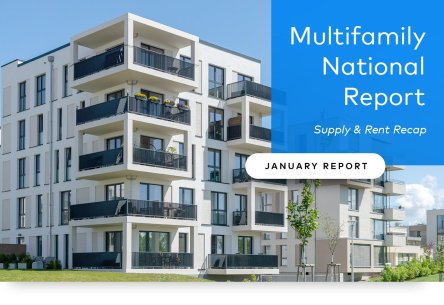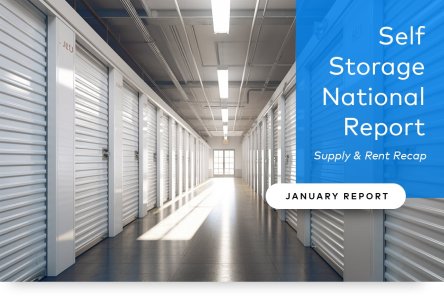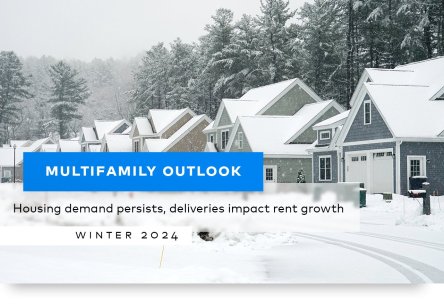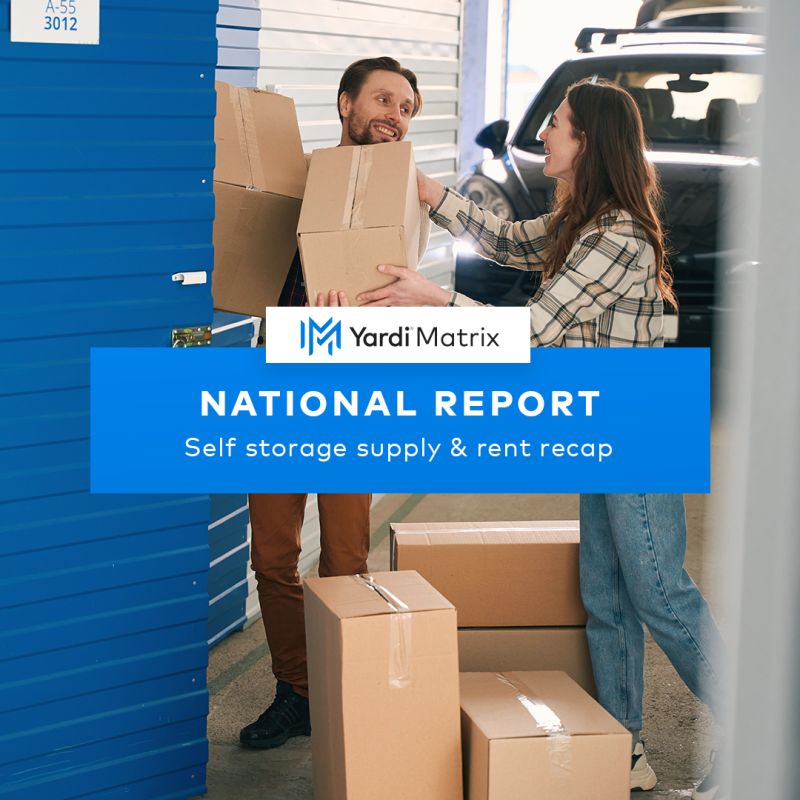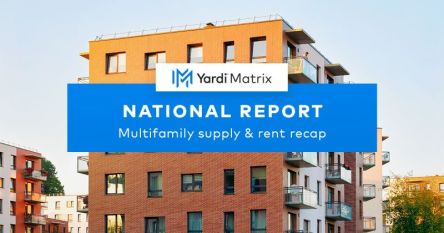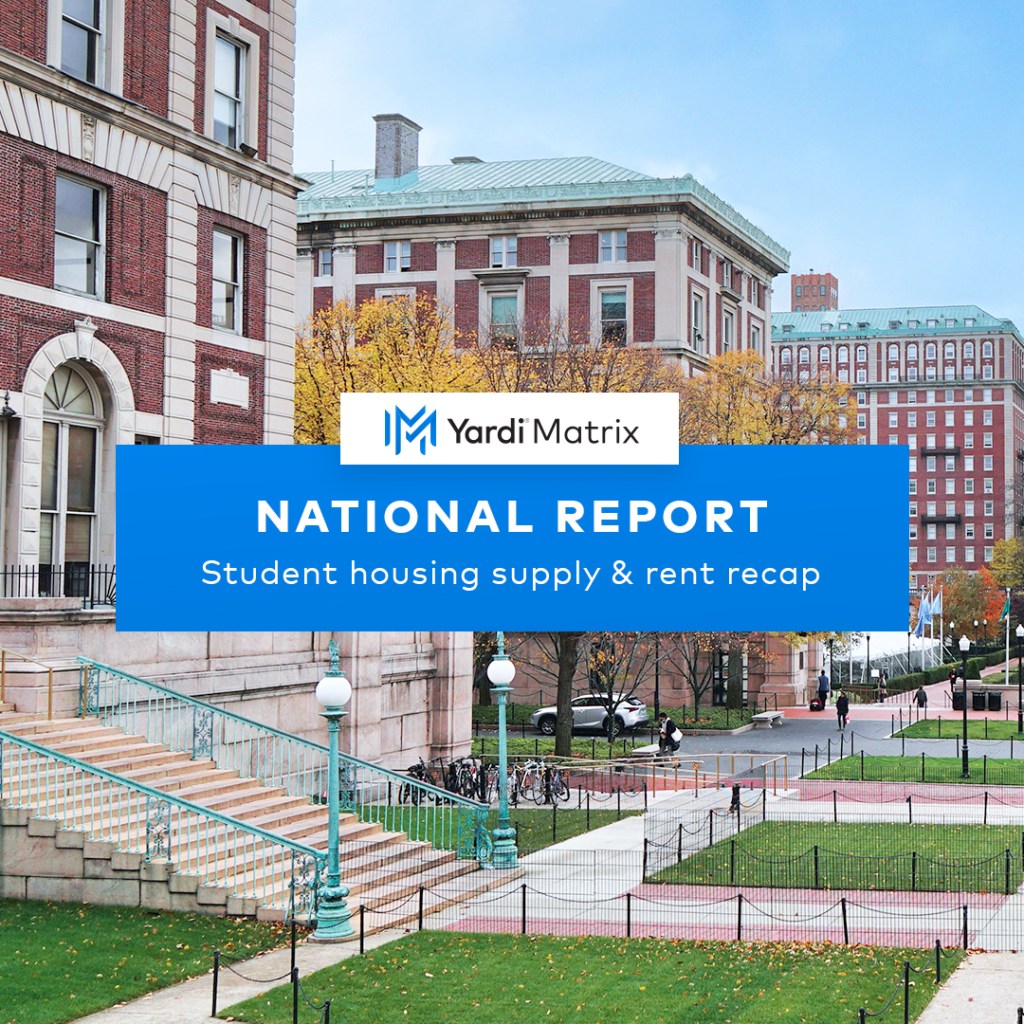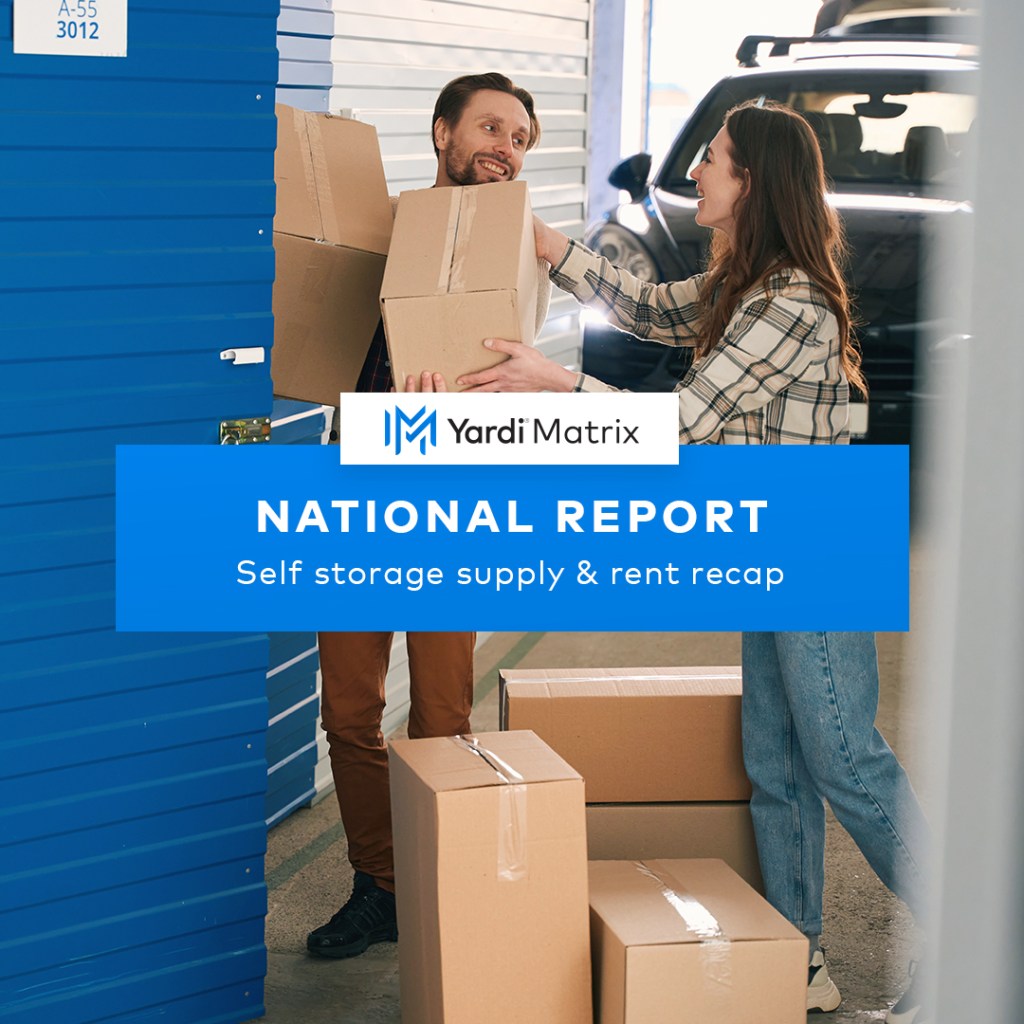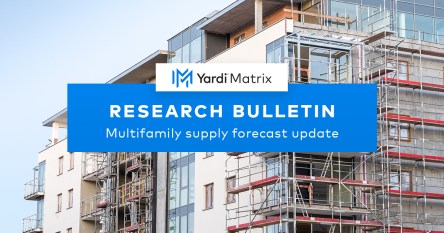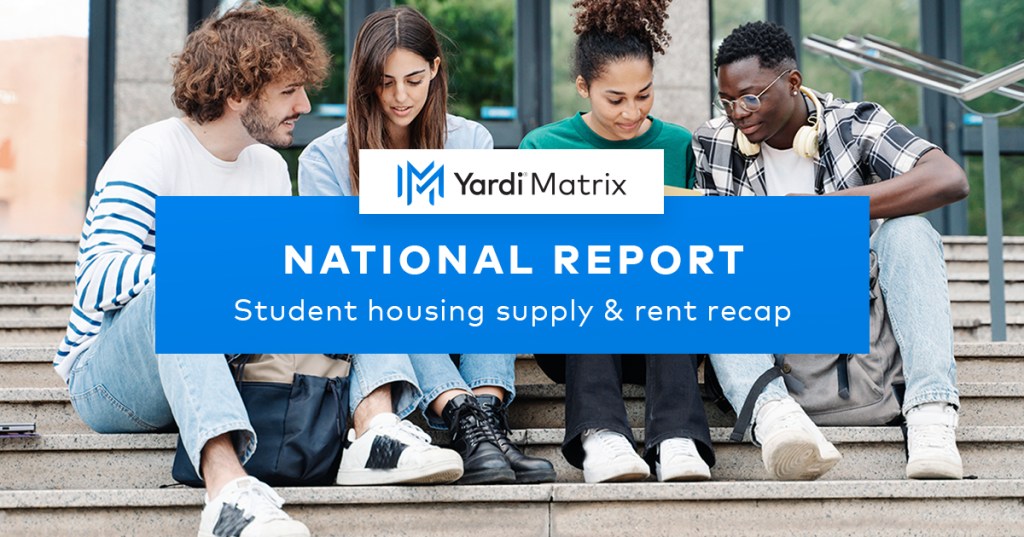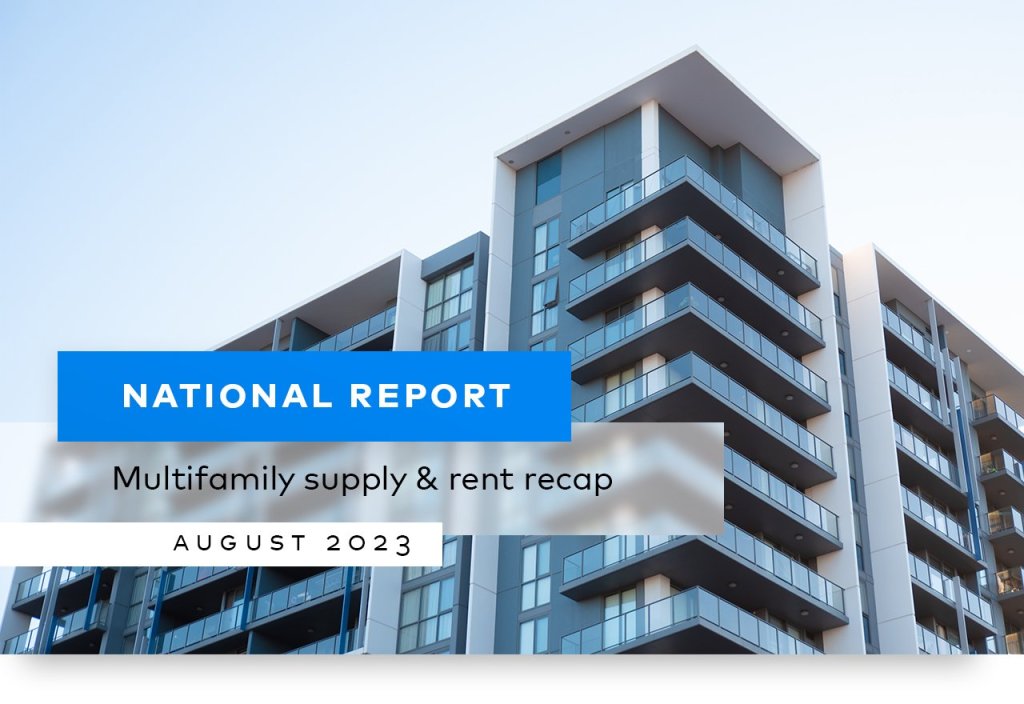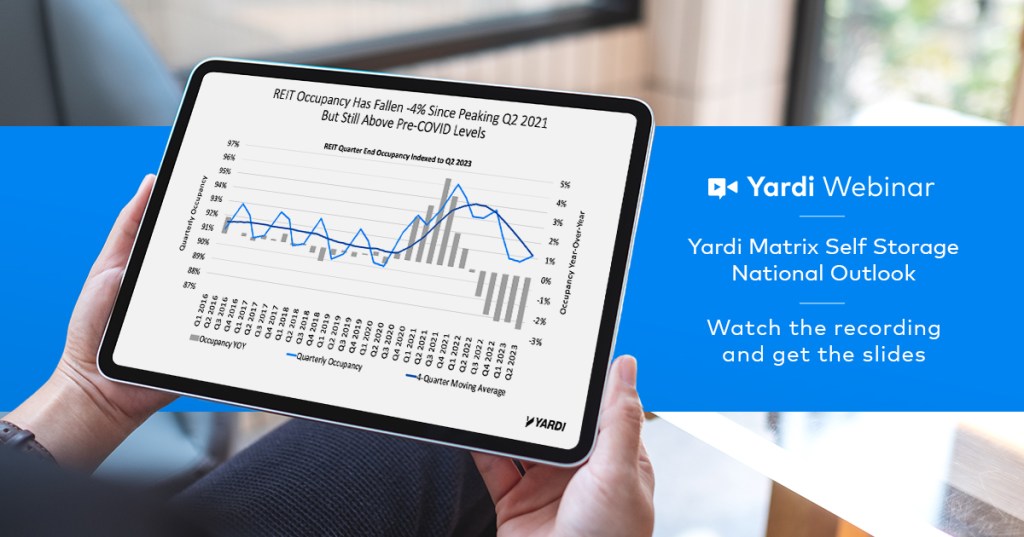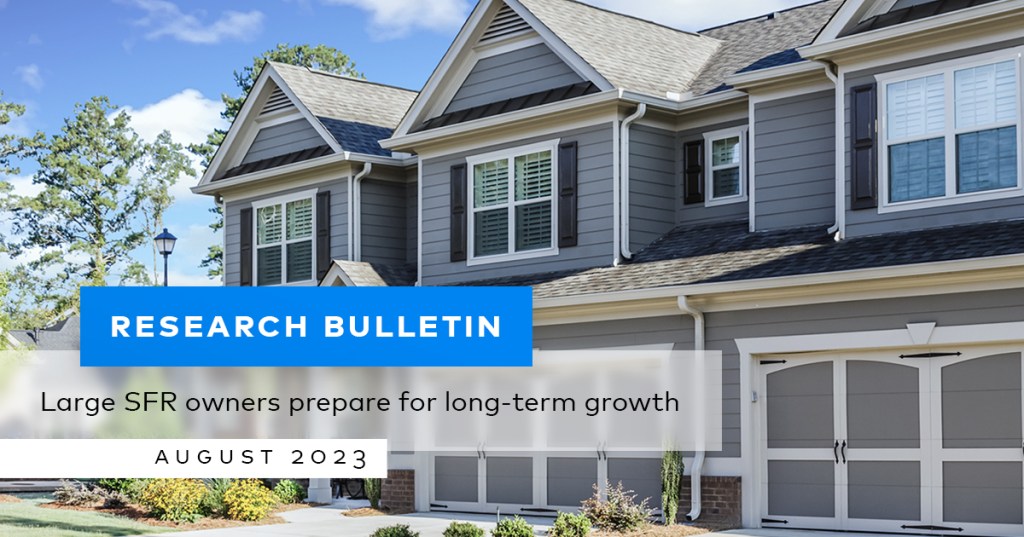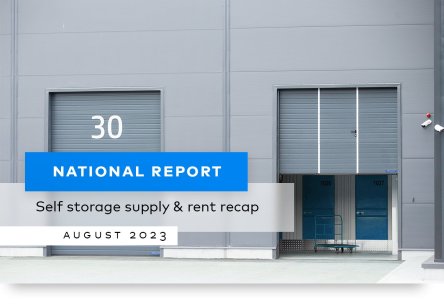Student housing’s consistently rising preleasing rate exceeded 50 percent of tracked inventory by the end of January 2024, well ahead of last year’s figure, according to the latest Yardi Matrix National Student Housing Report. Preleasing for the 2024-2025 school year reached 54.5 percent in January, marking a 710-basis-point increase since January 2023. A total of 22 markets were at least 75 percent preleased, while four exceeded the 90 percent rate. A combination of enrollment growth and decreasing new supply is driving the sector’s performance. Asking rates at Yardi 200 schools continued to climb to record highs, hitting $863 per bed in January. However, rent growth decelerated year-over-year, falling to 4.4 percent in January. “Rent growth patterns in student housing vary by market. Some operators push rates hard at the beginning of the leasing season to test the market and ease rent growth later on to fill the remaining beds. Slowing rent growth also reflects the fact that increases were high a year ago,” say Matrix analysts. Yardi Matrix forecasts that 46,285 new beds will deliver in 2024, marking a significant increase from the 35,610 beds delivered in 2023. Investment activity decelerated in 2023, with only 76 student housing properties changing hands. Gain more insight in the new Yardi Matrix National Student Housing Report. Yardi Matrix offers the industry’s most comprehensive market intelligence tool for investment professionals, equity investors, lenders and property managers who underwrite and manage investments in commercial real estate. Yardi Matrix covers multifamily, student housing, vacant land, industrial, office, retail and self storage property types. Email matrix@yardi.com, call 480-663-1149 or visit yardimatrix.com to learn...
Self Storage
Anticipates more supply
Yardi Matrix’s Q1 2024 Self Storage Supply Forecast suggests an expansion in near-term supply, while the coming years will show a decrease. The last quarter of 2023 registered an increase in construction starts and the under-construction pipeline, influenced by an uptick in new development. Consequently, the near-term forecast for 2024 and 2025 has been upped by 10.9 percent and 12.5 percent, respectively. Meanwhile, the forecast completions for the years 2026 through 2029 have been reduced in the latest update. Supply growth for 2026 and 2027 is expected to be around two percent of stock representing some 38 million NRSF. “In the second half of 2023 the number of abandoned and deferred projects in our database has noticeably increased, growth in both the planned and prospective pipelines has stalled and the year-over-year change in street rates was negative in 2023,” say Matrix analysts. In the fourth quarter of 2023, the planned pipeline rose by 1.43 percent, while the prospective stage remained flat throughout the year. The number of deferred projects grew 44.5 percent on an annual basis and the number of abandoned storage properties increased 104.2 percent compared to 2022. Review the new Self Storage Supply Forecast from Yardi Matrix. Yardi Matrix offers the industry’s most comprehensive market intelligence tool for investment professionals, equity investors, lenders and property managers who underwrite and manage investments in commercial real estate. Yardi Matrix covers multifamily, student housing, vacant land, industrial, office, retail and self storage property types. Email matrix@yardi.com, call 480-663-1149 or visit yardimatrix.com to learn...
Rents Remain Flat
Yardi Matrix Update
The multifamily market was stable at the start of 2024, despite the pressure of a supply boom in some markets, according to the latest Yardi Matrix National Multifamily Report. The average U.S. asking rent remained flat at $1,710 in January for a 0.5 percent year-over-year increase, while occupancy decreased 50 basis points year-over-year in December, to 94.6 percent. Rent growth remained highest in the Northeast and Midwest, while four of Yardi Matrix’s top 30 metros posted rent declines of three percent or more year-over-year. Occupancy was positive in one market and remained flat in two. Rent growth will be impacted by supply in 2024, as Yardi Matrix forecasts a record 540,000 units to be delivered this year, and another 460,000 units in 2025. “Another year of weak growth is expected in 2024 largely due to the rapid increase in deliveries that stems from the sector’s strong performance, high liquidity, and favorable treatment in the 2017 tax bill,” say Matrix analysts. New supply is inconsistent across the map, with the highest amounts in fast-growing tertiary and secondary markets, predominantly in the Sunbelt and Western regions. There, rent growth will likely remain tepid. Meanwhile, the weak supply in markets in the Northeast and Midwest is expected to keep rents rising. Single-family rentals outperformed multifamily last month, with the average rent up $2 to $2,130 in January, a 1.5 percent year-over-year increase. The occupancy rate in December stood at 95.7 percent, up 10 basis points year-over-year, a sign that demand remained robust. Gain more insight in the new Yardi Matrix National Multifamily Report. Yardi Matrix offers the industry’s most comprehensive market intelligence tool for investment professionals, equity investors, lenders and property managers who underwrite and manage investments in commercial real estate. Yardi Matrix covers multifamily, student housing, vacant...
Rent Forecast
From Yardi Matrix
A large amount of multifamily housing supply coming online is expected to suppress national average asking rent growth this year, according to a new special report from Yardi Matrix. While national average asking rents grew by 1.6 percent in 2023, the new supply will serve to depress rent appreciation this year “in many of the markets that saw explosive growth during the pandemic.” Some markets could end the year with slight negative growth. Stronger growth is anticipated in the working-class Renter-by-Necessity segment, as most of the new supply comprises upscale Lifestyle units, the report adds. Pandemic rent growth boomtowns including Las Vegas; Boise, Idaho; Phoenix; and Austin, Texas, saw the largest rent declines in 2023. Medium-size cities with large universities such as Madison, Wis., Knoxville, Tenn., and Syracuse, N.Y., were among the top performers. Another key story in 2024 is the continued compression in the spread between in-place rents and asking rents. Most markets still have a large gap between the two, but it will “continue to shrink as asking rent increases remain muted in the near term,” according to the report, which also predicts that the national economy will “slow significantly for two or three quarters.” The large volume of supply slated to come online in 2024 will take time to be completely absorbed. Afterwards, rent growth will return to the typical 3 to 4 percent annual increase in asking rents. Read Matrix’s analysis in the new Multifamily Rent Forecast Update. Yardi Matrix offers the industry’s most comprehensive market intelligence tool for investment professionals, equity investors, lenders and property managers who underwrite and manage investments in commercial real estate. Yardi Matrix covers multifamily, student housing, vacant land, industrial, office, retail and self storage property types. Email matrix@yardi.com, call (480) 663-1149 or visit yardimatrix.com to learn...
Storage Stabilizes
Latest Matrix Report
– The self storage market is achieving stability after an 18-month slowdown, the latest Self Storage National Report from Yardi Matrix shows. Annual street rate growth was still negative as of December. The average annualized same-store asking rent per square foot for the combined mix of unit sizes and types reached an average of $16.57 nationally last month, a 2.7 percent decrease on a year-over-year basis. Nearly all top metros had a negative street rate on an annual basis in December. Combined same-store rates for non-climate-controlled and climate-controlled units decreased in all but one of the top metros tracked by Yardi Matrix on a year-over-year basis. “New supply is a concern in certain markets but overall new supply in the top markets is expected to drop in 2024 as construction lending has dried up in the face of declining street rates, slower lease up pace and higher interest rates,” say Matrix analysts. Self storage is dependent on the housing market for demand and slowing home sales activity and fewer moves have had a significant impact. If the national housing market improves, the outlook for storage will quickly look up. Across the U.S., Yardi Matrix tracks a total of 5,073 self storage properties in various stages of development, including 871 under construction, 1,980 planned, 621 prospective, 1,510 abandoned and 91 deferred properties. Yardi Matrix also maintains operational profiles for 29,745 completed self storage facilities, bringing the total data set to 34,818. Gain more insight on the performance of the self storage sector. Yardi Matrix offers the industry’s most comprehensive market intelligence tool for investment professionals, equity investors, lenders and property managers who underwrite and manage investments in commercial real estate. Yardi Matrix covers multifamily, student housing, vacant land, industrial, office, retail and self storage property...
Student Housing Stands Out
Yardi Matrix Update
The student housing market jumped into the 2024-2025 leasing season on a high note, with December preleasing well ahead of last year’s figure, according to the latest Yardi Matrix National Student Housing Report. Asking rates also continued to climb, hitting $858 per bed in December and marking a 4.9 percent increase on a year-over-year basis. The sector was off to a record start, as preleasing for the 2024-2025 school year reached 47.3 percent in December, a nine percent increase over December 2022. The exceptional preleasing indicates a high renewal rate, with 51 markets boasting a 50 percent rate in December and ten schools already at least 75 percent preleased. Rent growth slowed a bit, falling from 6.4 percent recorded earlier in the leasing cycle to 4.9 percent in December 2023. “Many of the markets with the fastest preleasing are seeing the strongest rent growth as operators take advantage of the surge in demand. Twenty-seven schools with over 10 percent rent growth in December are, on average, five percent ahead of preleasing last year,” the report states. Based on data gathered from more than 150 schools, Yard Matrix shows a rebound in enrollment in the current academic year. Enrollment at these schools is up 1.4 percent from last year—almost triple the growth recorded in fall 2022. Student housing investment is in line with current trends across the real estate industry, as high interest rates continue to impact sales. Preliminary data shows that only 73 student housing properties changed hands in 2023 across Yardi 200, compared to an average of 205 properties sold in 2021 and 2022. Gain more insight in the new Yardi Matrix National Student Housing Report. Yardi Matrix offers the industry’s most comprehensive market intelligence tool for investment professionals, equity investors, lenders and property managers who underwrite and manage investments in commercial real estate. Yardi Matrix covers multifamily, student housing, vacant land, industrial, office, retail and self storage property types. Email matrix@yardi.com, call 480-663-1149 or visit yardimatrix.com to learn...
Multifamily Outlook
From Yardi Matrix
After two years of stellar growth, rents decelerated in 2023, despite demand still at strong levels thanks to a resilient economy. The 2024 Multifamily Outlook from Yardi Matrix anticipates a year of challenges, including slowing national rent growth. National rent growth moderated to 0.4 percent year-over-year through November 2023, from a combined 23.5 percent in 2021 and 2022. Absorption stabilized at 300,000 apartment units in 2023, compared to 600,000 in 2021 and 200,000 in 2022. Yardi Matrix expects that rent growth and occupancy will be heavily tested next year. Of the 1.2 million apartment units under construction at the start of 2024, 510,000 are expected to be delivered by the end of the year, the highest number in decades. “We expect demand for multifamily to remain healthy in 2024, but headwinds that include slower job growth, increasing supply and waning affordability in some markets will keep rent growth restrained again,” state analysts, forecasting a tepid 1.5 percent rent growth nationally. The 2024 forecast calls for Midwest metros to lead rent growth, and the Sunbelt and West markets to continue to experience in-migration from the coasts both by residents and businesses. Sunbelt markets such as Austin, Nashville, Charlotte and Orlando are already seeing stalling rent growth, and despite robust population and job growth, they boast high levels of new supply, which will further suppress rents. On the investment front, already down by 70 percent year-over-year, multifamily sales will likely remain sluggish in 2024, due to the impact of interest rates and pricing uncertainty. Gain more insights in the latest U.S. Multifamily Outlook from Yardi Matrix. Yardi Matrix offers the industry’s most comprehensive market intelligence tool for investment professionals, equity investors, lenders and property managers who underwrite and manage investments in commercial real estate. Yardi Matrix...
Self Storage Update
From Yardi Matrix
The self storage industry is feeling the impact of the housing market slowdown on demand for storage units, states the latest Self Storage National Report from Yardi Matrix. The average annualized same-store asking rate per square foot for combined unit sizes and types averaged $16.57 nationally in November, a 4.2 percent drop on a year-over-year basis. Street rates also remained negative on an annual basis in November in nearly all top metros. Combined same-store rates for non-climate-controlled units decreased in all but one of the top markets tracked by Yardi Matrix on a year-over-year basis. Meanwhile, the asking rates for same-store climate-controlled units fell in all major metros. “Rising housing costs and incomes that have not kept pace has resulted in one of the most unaffordable housing markets in the past thirty years, stifling home sales. As a key storage demand driver, a slowdown in the housing market is dampening occupancy and weighing down street rates,” say Matrix analysts. At a national level, Yardi Matrix tracks a total of 5,028 self storage properties in various stages of development, including 883 under construction, 1,940 planned, 631 prospective, 1,489 abandoned and 85 deferred properties. Yardi Matrix also maintains operational profiles for 29,376 completed self storage facilities, bringing the total data set to 34,404. Gain more insight on the performance of the self storage sector. Yardi Matrix offers the industry’s most comprehensive market intelligence tool for investment professionals, equity investors, lenders and property managers who underwrite and manage investments in commercial real estate. Yardi Matrix covers multifamily, student housing, vacant land, industrial, office, retail and self storage property types. Email matrix@yardi.com, call 480-663-1149 or visit yardimatrix.com to learn...
Rents Trend Down
Reports Yardi Matrix
National multifamily asking rent decreased for the third consecutive month in November, according to the latest Yardi Matrix National Multifamily Report. The average U.S. asking rent fell $6 to $1,713 in November, with year-over-year growth at 0.4 percent, on par with September. Occupancy remained steady at 94.9 percent since August. Metros in the Northeast and Midwest remained in the lead for rent growth, while Sunbelt and West metros lagged. More so, seven of Yardi Matrix’s top 30 markets were down 3.0 percent or more year-over-year, with the most significant rent declines registered in Sunbelt metros where developers delivered new supply in volume. “One could say the multifamily market is metaphorically hunkering down for the winter as property owners face the prospect of weak near-term rent growth due to inflation, the loosening job market and a surge in deliveries in some markets, while values and capital markets liquidity deteriorate as interest rates remain higher-for-longer,” states the report. Although rent growth was restrained in the middle of the last quarter of 2023, it posted a 23.5 percent increase since the start of the pandemic in March 2020. The current slowdown resulted from stock expansion in some areas and stretched affordability in other areas. Planned deliveries over the next two years will likely create some balance. Rents contracted across asset classes, steeper in the Lifestyle segment (down 0.4 percent) than in the Renter-by-Necessity segment (down 0.2 percent). Overall, monthly rent growth was negative in 25 of Yardi Matrix’s top 30 metros. Single-family rents fell $8 in November to $2,115, for a 0.7 percent year-over-year increase, down 30 basis points from October. Rent growth was solely sustained by the RBN segment, up 3.2 percent year-over-year, while Lifestyle rents declined 0.1 percent during the interval. Gain more insight in the...
Student Housing
Off and Leasing for Next Year
The fall semester may just be coming to a close, but preleasing for the 2024-2025 school year is already underway and off to a strong start, states the latest Yardi Matrix student housing report. Advance leasing for next school year started off extremely strong, reaching 25.2 percent for the Yardi 200 in October, well ahead of the previous record 10.4 percent preleased in October 2022. Preleasing this year is indicative of solid renewal activity early on and high demand for housing at many major universities, with 14 schools already more than 40 percent preleased. As for this year, final occupancy for the Yardi 200 markets for the fall 2023 semester settled at 94.6 percent in September 2023, compared to 96.2 percent in September 2022. Lower occupancy this year can be partly attributed to new properties that delivered late or struggled with preleasing. Properties that were completed in 2023 only reached 81.7 percent occupancy for the fall 2023 semester. Last month, average asking rent per bed was $854 among the Yardi 200 markets for the 2024- 2025 school year, slightly higher than where it ended the 2023 preleasing season in September 2023 and 6.6 percent higher than October 2022. “Some of the schools with the fastest preleasing are already seeing rents up 15-25 percent year-over-year, as operators take advantage of the surge in demand,” states the report. Read more findings from the latest student housing report. Yardi Matrix offers the industry’s most comprehensive market intelligence tool for investment professionals, equity investors, lenders and property managers who underwrite and manage investments in commercial real estate. Yardi Matrix covers multifamily, student housing, vacant land, industrial, office, retail and self storage property types. Email matrix@yardi.com, call 480-663-1149 or visit yardimatrix.com to learn...
Demand Still Sluggish...
For Self Storage
Slowed demand for self storage continues to drive street rates lower, reports the new Self Storage National Report from Yardi Matrix. Annual street rate growth stayed negative in October. The average annualized same-store asking rate per square foot for the main unit types and sizes averaged $16.77 nationally last month, marking a 4.2 percent drop from the average recorded in October 2022. Street rates also remained negative on an annual basis in October in nearly all of the top metros. Combined same-store rates for non-climate-controlled units fell in all but one of the markets tracked by Matrix year over year, while asking rates for same-store climate-controlled units decreased in all of the top metros. “Elevated residential mortgage rates have slowed home sales, reducing population mobility, a major driver of storage demand. As a result, storage operators continue to lower asking rates to drive new rental demand,” states the report. In-place storage rents continue to trend upwards, supported by existing customer demand, helping bolster rental income for operators. In addition, the labor market remains relatively strong and inflation is slowing, which will benefit the sector as it helps boost the financial confidence of new and existing customers. Nationally, Yardi Matrix tracks a total of 5,006 self storage properties in various stages of development, including 864 under construction, 1,940 planned, 673 prospective, 1,457 abandoned and 72 deferred properties. Yardi Matrix also maintains operational profiles for 29,234 completed self storage facilities in the U.S., bringing the total data set to 34,240. Gain more insight on self storage performance. Yardi Matrix offers the industry’s most comprehensive market intelligence tool for investment professionals, equity investors, lenders and property managers who underwrite and manage investments in commercial real estate. Yardi Matrix covers multifamily, student housing, vacant land, industrial, office, retail and self storage...
Supply Forecast
From Yardi Matrix
Multifamily construction starts increased slightly in Q3 2023, and should have a positive impact on future deliveries, states the latest Multifamily Supply Forecast from Yardi Matrix. Construction starts remained relatively robust in the first half of 2023, and the under-construction pipeline increased 7.6 percent in the third quarter. As a result, the Q4 2023 supply forecast update has increased forecast completions 5.8 percent for 2024 and 6.2 percent for 2025. For multifamily markets tracked by Yardi Matrix, there are currently 1,223,601 units in the under-construction pipeline. Of these units, 479,634 are currently in lease-up, roughly in line with the trailing six-month average of 483,000 units but some 15.9 percent above year-ago levels. Most of these units will be completed this year or in the first half of 2024. Multifamily construction starts held at a relatively high level through the first half of 2023. As a result, the number of under-construction units not in lease-up continues to increase. Currently there are 743,967 units, a 16.2 percent quarterly increase and a 35.3 percent increase over year-ago levels. These units will most likely be completed in 2024 or 2025. Find more insights on forthcoming multifamily supply from Yardi Matrix. Yardi Matrix offers the industry’s most comprehensive market intelligence tool for investment professionals, equity investors, lenders and property managers who underwrite and manage investments in commercial real estate. Yardi Matrix covers multifamily, student housing, vacant land, industrial, office, retail and self storage property types. Email matrix@yardi.com, call 480-663-1149 or visit yardimatrix.com to learn...
Student Housing Webinar
Matrix outlook remains positive
The Yardi Matrix team, including Jeff Adler and Tyson Huebner, delivered its final webinar of the 2023 year on the student housing sector’s performance and investment opportunities. If you missed it, you can view the recording and presentation slides here. Student housing maintained strong performance into the start of the 2023/2024 school year, though preleasing activity and rent growth showed some signs of slowing in the final weeks of leasing season. “The bottom line is that this sector compared to other sectors in the housing industry is looking very stellar. Good positioning, good rent growth – we don’t think (next year) will be quite as good as this year was, but still very strong,” said Adler, vice president of Yardi Matrix. “This is a great real estate segment and industry to be in, but picking the right schools is very critical to success.” Yardi Matrix has updated the schools whose housing is tracked in the Yardi 200, swapping out about 30 institutions less relevant to investors. The total tracked data set now includes 2,200 properties with 1.1 million beds. As of September 2023, 95.1 percent of beds at Yardi 200 universities were preleased, compared to 96.2 percent in September 2022. Lower preleasing in recent months can be partly attributed to slow lease-up of new 2023 deliveries, which were only 84.4 percent preleased in September. Rents are near an all-time high at $846 per bed, relatively unchanged in the past four months. Rent growth dropped to 6.1 percent in September, down from 6.5 percent in August and a peak of 7 percent in March 2023. But it is still well above previous years; it averaged 2.9 percent in September 2019, 2020, 2021 and 2022. (Read more findings from the latest student housing report here.) Student housing has seen a steep drop-off in transaction activity, which is attributed to ongoing strong performance and difficult financing conditions. But for owners and developers who completed new projects in time for fall leasing, rents were much higher than for existing properties. “New properties delivering this year had rents that were 29 percent above the national average,” said Huebner. Rents per bed for newly completed units averaged $1,088 as of September. “With continued rent growth in the sector and new supply coming at pretty high price points, I do think that will be an emerging investment opportunity when capital market conditions are ripe,” Adler said. He continued: “Everything’s a great place to put capital into; it’s a great place to participate. It does require an intense knowledge of each particular school and the sort of demand supply enrollment balances that make that all work.” Improve your market knowledge with a Yardi Matrix subscription: the industry’s most comprehensive market intelligence tool for investment professionals, equity investors, lenders and property managers who underwrite and manage investments in commercial real estate. Yardi Matrix covers multifamily, student housing, vacant land, industrial, office, retail and self storage property types. Email matrix@yardi.com, call 480-663-1149 or visit yardimatrix.com to learn...
Matrix Assesses Multifamily Market
Webinar insights include economy, WFH, affordability and more
Yardi Matrix vice president Jeff Adler delivered an in-depth update on the state of the U.S. economy and the multifamily investment landscape last week, covering everything from inflation to recession risk to post-pandemic in-office trends. You can review the recording of the webinar and presentation materials here. Industry insiders know that these webinars are among the very best way to stay up to date on trends, performance and data. The next Matrix webinar will cover the outlook for the student housing sector on Oct. 25. You can sign up here. Among the key Yardi Matrix house view takeaways on the economy: U.S. economic growth is still strong, at 2.4 percent GDP growth in Q2 and strong early numbers for Q3 Inflationary pressures have started to cool, but remain elevated due to underlying price pressures Labor market is tight, but showing signs of softening “Inflationary pressures have been cooling, they remain a bit elevated, they are coming down. Maybe not as quickly as the Fed would hope,” Adler said. He still anticipates that a mild recession is on the way, likely landing in Q4 or the first half of 2024. “It’s a little hard for me to pinpoint exactly, but the process is pretty much played out, if not the exact timing of it.” Top line takeaways for those interested specifically in the multifamily sector: The market continues to outperform expectations, despite decelerating rent growth Regional market rotation is underway. Examples include slowing performance of Lifestyle units in the Sunbelt, due to increased supply, and outperformance in Midwest, Northeast and some Mountain metros This market rotation is due to affordability, which has become a primary focus for renters and pundits alike Supply shortage of U.S. housing is likely to be in place for the next decade “Rent growth has slowed down. We’re now looking at a tenth of a point in August over July,” Adler stated. Sequential rent growth is also very weak. While beneficial for multifamily operators, one of the sector’s greatest challenges is housing supply and affordability, which go hand in hand. “The housing deficit that built up from the Great Recession is still there. Regulatory costs account for 40 percent of multifamily development costs,” Adler noted. Some states, like California, Texas and Florida, but still have a long way to go. “If you really want to solve the problem, you got to have supply of all kinds. Where we have seen rents come down or decelerate, it’s been in markets with lots of supply,” he stated. One of the most interesting points shared in the webinar was how in-office work trends have played out over the last year. Data was delivered by Scoop. These metrics are relevant to the housing market because they determine how much flexibility workers have with where they live. Key takeaways included: The majority of U.S. companies, 61 percent, are allowing workers some in-office/remote flexibility The average in-office requirement time per week is currently 2.6 days Massachusetts, Oregon and Washington are the states with the most flexibility for remote work. The least flexible are Alabama, Kentucky and Arkansas Bottom line, rise in remote work has allowed workers to leave cities for more suburban areas, leading to declining population in some metros Want to gain all the great insight from Wednesday’s webinar? Find the recording of the webinar and presentation materials here and get...
Student Housing in Strong Spot
To start the 23/24 School Year
The student housing sector starts the school year in a strong position, as preleasing matches last year’s solid performance and year-over-year rent growth has continually outpaced 2022’s historic growth. Student housing is one of the few real estate sectors to be continually resilient post-pandemic, according to the latest National Student Housing Report from Yardi® Matrix, which is now available for download. You can also join the upcoming Student Housing Webinar with Matrix experts on Oct. 25 and gain more in-depth insight. As of August 2023, 94 percent of beds at Yardi 200 universities were preleased, a 3.3 percent increase from the prior month and 0.2 percent behind August 2022. Rents remained flat in August from July at $845 per bed, but year-over-year rent growth of 6.9 percent in August was still well above the historic average for the sector. “As we enter the 2023-2024 school year, student housing preleasing matches last year’s solid trend and year-over-year rent growth has continually outpaced last year’s historic growth, as well as other property sectors,” say Matrix analysts in the new report. “The sector is in prime position to weather a potential recession, with counter-cyclical demand patterns and solid occupancy and rent growth baked in for the 2023-2024 school year.” Strong fundamentals continue to fuel development, and Matrix projects approximately 40,000 new beds to deliver in fall 2023 at Yardi 200 universities, compared to the 27,000 delivered in fall 2022. Solid preleasing and rent growth suggest that much of the new supply has already been absorbed. Read more findings from the latest student housing report. The student housing data set includes over 2,000 universities and colleges nationwide, including the top 200 investment grade universities across all major collegiate conferences. Known as the “Yardi 200,” it includes all Power 5 conferences as well as Carnegie R1 and R2 universities. Yardi Matrix offers the industry’s most comprehensive market intelligence tool for investment professionals, equity investors, lenders and property managers who underwrite and manage investments in commercial real estate. Yardi Matrix covers multifamily, student housing, vacant land, industrial, office, retail and self storage property types. Email matrix@yardi.com, call 480-663-1149 or visit yardimatrix.com to learn...
Insurance Costs
Lead Multifamily Expense Increases
Rising costs for multifamily operators are the focus of a new research bulletin from Yardi Matrix. Expenses for multifamily properties nationally grew by an average of 9.3 percent in the trailing 12-month period ending in June. That growth is 63 percent higher than the 5.7 percent increase during the previous 12 months, according to the new Matrix research. The recent increase in expenses represents $740 in additional costs per unit at the average U.S. multifamily property, with the average property operating expense rising to $8,694 per unit, per year, according to Matrix. Insurance led the way in rising expenses. Policy costs were up 18.8 percent on average in the 12- month reporting period. Other expense categories with large jumps include repairs and maintenance (14.2 percent), administrative (11.8 percent), and utilities and payroll (both 7.8 percent). “Rapid expense growth comes at an inopportune time for the industry. After a long bull market, asking rent growth has decelerated and is likely to remain weak in many metros as deliveries hit levels last seen in the 1980s,” state Matrix experts. “Also, the big jump in mortgage rates .. has produced a large increase in debt-service costs for properties that need new mortgages.” Learn more about the expense increases and the impact on multifamily owners and operators. Yardi Matrix offers the industry’s most comprehensive market intelligence tool for investment professionals, equity investors, lenders and property managers who underwrite and manage investments in commercial real estate. Yardi Matrix covers multifamily, student housing, vacant land, industrial, office, retail and self storage property types. Email matrix@yardi.com, call 480-663-1149 or visit yardimatrix.com to learn...
Multifamily Rent Update
From Yardi Matrix
Multifamily performance was stable in August, according to the latest Yardi Matrix National Multifamily Report. The average U.S. asking rent rose $1 to $1,728, while year-over-year growth fell to 1.5 percent, down 20 basis points from July. Occupancy was also effectively flat. “Economic growth continues to be stronger than expected, providing a backdrop to consistent multifamily demand. U.S. asking rents rose slightly in August, while occupancy rates remained strong at 95 percent,” states the report. These trends and much more will be discussed Sept. 20 in a multifamily-focused webinar with Matrix experts Jeff Adler and Paul Fiorilla. Sign up here to join live or receive the post-event recording. In the short term, supply remains a driving factor in rent growth. Most metros with the highest year-over-year asking rent growth, such as New York, Chicago, Indianapolis and San Diego, have weak new development pipelines. Single-family rents dropped back in August, down $6 nationally to $2,104. Year-over-year, national SFR rent growth fell 70 basis points to 0.5 percent. According to the report, some 190,000 multifamily units have been absorbed in the U.S. through July. That figure is below the record-setting year of almost 600,000 in 2021 but is otherwise a healthy pace. Among the top 30 Matrix metros, absorption in absolute numbers in 2023 has been led by Washington D.C., Phoenix, Miami, Chicago and Denver. As a percentage of stock, Charlotte, Tampa and Nashville are among the metros that have performed the best so far in 2023. Gain more insight in the new Yardi Matrix National Multifamily Report. Yardi Matrix offers the industry’s most comprehensive market intelligence tool for investment professionals, equity investors, lenders and property managers who underwrite and manage investments in commercial real estate. Yardi Matrix covers multifamily, student housing, industrial, office and self storage property types. Email matrix@yardi.com, call (480) 663-1149 or visit yardimatrix.com to learn...
Weak Demand Hurts Self Storage
Yardi Matrix webinar recap
Self storage performance slumped in the second quarter of 2023, typically the strongest quarter, due to weak demand. That was among the top takeaways from a Thursday webinar hosted by industry leading data provider Yardi Matrix. You can view the webinar recording and presentation materials here. Among other key takeaways for the sector: Street rate growth continues to decelerate, as same store rates were down -4.6 percent in July One bright spot: operators were able to grow revenue by increasing existing customer rents (ECRI) The amount of new supply under construction Is moderating and likely won’t return to normal until 2025-2027 Investment activity is drastically reduced, with two notable exceptions (read on for details) “We’re in a kind of a 2017-2019 kind of world, where revenue growth is really off the back of ECRIs versus street rents,” said Jeff Adler, vice president of Yardi Matrix, during the webinar. Reasons that demand has dropped included the challenging single family real estate market, with interest rates for new purchases around 7 percent, and diminished mobility of American households post-pandemic. “Lower street rates are a result of weak move-in activity, with average REIT occupancy in Q2 2023 down 400 basis points from its all-time peak in Q2 2021,” states the latest self storage report. In July, overall national street rates (all unit sizes and types combined) dropped $1 to $141, down 0.7 percent month-over-month. Historically, rate growth is positive in July, averaging a sequential increase of 0.8 percent in the past seven years. While an anticipated recession has yet to fully materialize, Adler still expects that one will be in place by the end of the year, due to a lag time between Federal Reserve actions and the ultimate impact on the real economy. “We’re still in this period of time where you’re seeing strong economic growth, but we are seeing the beginning of the signs of a slowing trend,” Adler said. Self storage demand has historically been resilient, coming from a variety of sources, and growth rebounds quickly following a downturn due to month-to-month lease terms and flexible customer rate increase programs. But investor increased in the sector has also taken a hit in 2023, with two notable exceptions. Extra Space merged with competitor Life Storage in July. The combined company is now the largest storage operator in the country (based on the number of self-storage locations) with over 3,500 locations, approximately 270 million square feet of rentable storage space, and more than two million customers. Public Storage also announced last month that it has entered an agreement to acquire Simply Self Storage for $2.2 billion. According to the announcement: “The portfolio comprises 127 wholly-owned properties and 9 million net rentable square feet that are geographically diversified across 18 states and located in markets with population growth that has been approximately double the national average since 2018.” Aside from those significant moves, sales and M&A activity have plummeted, said Tyson Huebner, director of institutional research for Yardi Matrix. “It should be no surprise that transaction volume thus far this year has really fallen off the cliff. The number of properties sold in the first half of 2023, which doesn’t include those two portfolios, was down 56.6% from the first half of 2022,” Huebner said. Gain additional insights on self storage and the economy by checking out the entire...
Single-Family Rental Market
In Growth Mode
Although its pandemic-driven expansion has been tempered recently by rising mortgage rates and cooling home sales, the U.S. institutional single-family rentals (SFR) industry has entered a moderate growth mode that positions it “to thrive over the long term,” according to a new research bulletin from Yardi Matrix. Robust household family formation and elevated demand for family and home office space during the pandemic sparked a run-up of SFR rents, which increased by 27.9% from January 2020 to mid-year 2023. Occupancy rates have remained above 95% since January 2018. But rent increases slowed and year-over-year rent growth decelerated in the first half of 2023. The Federal Reserve has increased short-term interest rates by 525 points since spring 2022 and institutional SFR acquisitions have declined after two years of record volume. Despite this, “demand for single-family rentals is almost certain to remain firm,” with the sector having “solidified its presence as a niche segment of the overall commercial real estate market,” the bulletin says. The extent of the sector’s growth will depend on how well owners and investors succeed in financing acquisitions and developing efficient property management strategies. Nashville, Tenn., had the strongest year-over-year SFR rent growth at mid-year, followed by Baltimore and Chicago. The weakest metros for rent growth were Orlando, Fla., Miami and California’s Inland Empire. There’s much more insight into the SFR market in the August 2023 Yardi Matrix Bulletin, including an examination of fundamental drivers, a discussion of proposed legislation regarding institutional SFR purchases, a review of acquisition growth trends and reports on regional stock deliveries. Download your...
Street Rates Fall
Self Storage Update
Self storage street rates slipped month-over-month in July as demand and supply trends soften, according to the latest National Self Storage Report from Yardi Matrix. Street rate performance was weaker than normal in July. Nationally, overall street rates (all unit sizes and types combined) dropped $1 to $141, down 0.7 percent month-over-month. Historically, rate growth is positive in July, averaging a sequential increase of 0.8 percent in the past seven years. “Lower street rates are a result of weak move-in activity, with average REIT occupancy in Q2 2023 down 400 basis points from its all-time peak in Q2 2021. Demand is impacted by the weak home sales market and domestic migration coming down from pandemic highs,” state Matrix analysts. Street rates continued to be negative year-over-year in July in nearly all of Yardi Matrix’s top 31 metros. Rates for 10×10 non-climate-controlled units dropped in 30 of the top 31 metros compared to July 2022, while rates for similar-size climate-controlled units also decreased in all but one of the top markets (Pittsburgh). Despite the challenges, there are bright spots. The job market remains sound, and strong consumer balance sheets will support long-term demand. Self storage demand has historically been resilient, coming from a variety of sources, and growth rebounds quickly following a downturn due to month-to-month lease terms and flexible customer rate increase programs. Learn more about the state of the self storage sector nationwide. Yardi Matrix tracks a total of 4,916 self storage properties in various stages of development, including 830 under construction, 1,977 planned, 672 prospective, 1,375 abandoned and 62 deferred. Matrix also maintains operational profiles for 30,152 completed self storage facilities across the United States, bringing the total data set to 35,068. Yardi Matrix offers the industry’s most comprehensive market intelligence tool for...

